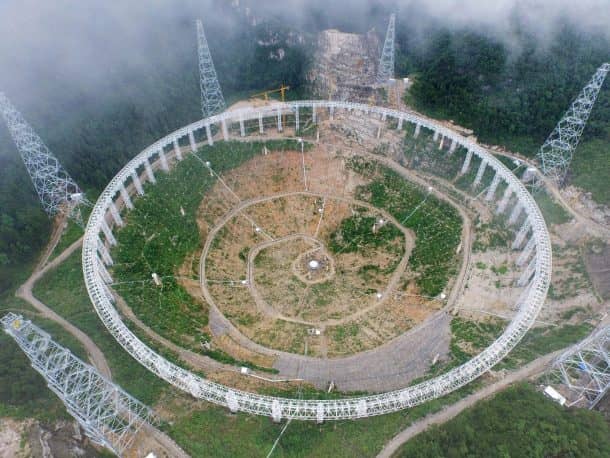Under a mega science project, China built the largest single dish radio telescope in the world, nicknamed Tiyanyan meaning The Eye of Heaven. The Five Hundred Meter Aperture Spherical (FAST) Telescope has been constructed in the Dawodang depression that exists naturally.

Reportedly no Chinese astronomers hold the qualification to run a facility of this size and complexity, so they are looking for foreigners with good experience in the area. The position was advertised in May, and so far no suitable candidate has been found for the job that pays $1.2 million a year. The high job requirements drop the eligible candidates around the globe to very few as the facility requires an expert with a minimum of 20 years of field experience as well as a lead role experience in a large-scale radio telescope project. They also require the candidate to have a high ranking position in a well-reputed university and a long term managerial experience.
An astronomer at Texas A&M University, Nick Suntzeff suggests that there are hardly 40 people on the planet who would qualify for the job but “But most astronomers in the United States do not like to work abroad. It was hard to get people to apply to work in La Serena, something I could never understand, considering how beautiful it is and how nice the Chilean people are,” adding, “I am sure they will find someone.”
Radio astronomy is a very small field with lesser graduates than any other astronomy disciplines and much lesser than other science fields. Suntzeff was also the lead researcher in the discovery of dark energy and is involved in the construction of optical Giant Magellan Telescope in Chile. According to him, a high salary is not enough for the scientists who wish to join exciting graduate programs and remain at the latest of technology research.

Large parabolic dishes that make radio telescopes collect radio waves from distant sources like pulsars and black holes. The Five hundred meter Aperture Spherical Telescope in China has become the largest crossing the 300-meter-diameter Arecibo radio telescope in Puerto Rico, operated by the US. Americans scientists have concerns over FAST’s scientific value as the Arecibo radio telescope has a potential of getting closed soon. It is one of the facilities funded by National Science Foundation, and recent reviews have suggested that closing the funding for the facility will save $8 million for other science projects.
Other critics of the facility say that it lacks the capacity of transmitting radio waves as the Arecibo does, thus limiting its effectiveness in identifying targets like the asteroids near earth. Some astronomers could be tempted to use the installation for identifying potential alien communication, but that is not enough attraction to make the best scientists in the world move their lives to a rural part of China.



The only company I know for such a big project is HUBER+SUHNER with headquater in Switzerland